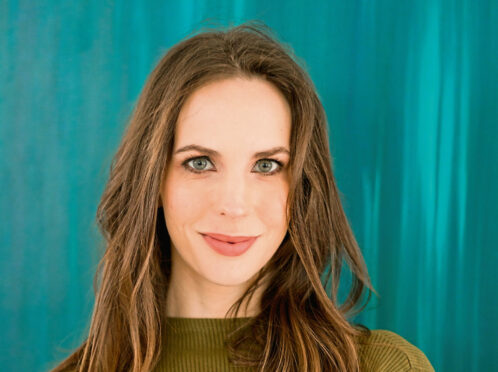
Sally Gardner was just 11 when she was declared “word blind”. The little girl who from age five escaped her unhappy childhood by living in the stories conjured in her mind, wound up at a school for “maladjusted” and “unteachable” children because no other would take her.
Then at 14, when everyone had given up on her, she learned to read. The first book she devoured was the Emily Bronte classic Wuthering Heights. She has not looked back.
Gardner, the granddaughter of a Scottish jeweller, saw her lawyer parents separate when she was small; later graduated with first-class honours from art school; and went on to Newcastle University Theatre where she worked as a theatre designer, before moving into costume design.
But she was haunted by her first love – telling stories. So in 1997, despite her dyslexia, she decided to try writing for children. The result was astounding. With more than two million books sold in the UK and translated into more than 22 languages, her debut I, Coriander, won the 2005 Nestle Children’s Book Prize, while in 2013 Maggot Moon landed both the Costa Children’s Book Prize and the Carnegie Medal.
Now she looks set to repeat her meteoric success – this time in the adult market. Her addictive and atmospheric novel, The Weather Woman (out this week), is set in 18th Century London between two great Frost Fairs on the frozen Thames.
It’s a heady cocktail of science and illusion, sexual identity, cross dressing and female empowerment, deliciously laced with pathos and occasional humour. Cue intellectually brilliant Neva, a woman ahead of her time with the dangerous gift for forecasting the weather.
Born in an era when females were without agency, she adopts a sophisticated disguise to move freely among the men of science. But she falls for a charismatic young chap who is as attracted to her secret self as he is to her.
From her home in Hastings, mum-of-three Gardner tells P.S: “All I have wanted to do since the age of five was to write but being dyslexic I felt I couldn’t. I was paralysed by my dyslexia. I really struck gold when I eventually started writing because, ironically, I found my it didn’t matter.
“I discovered what publishers are looking for is a voice and a way of writing; a style. And I had that. All those stories I told myself when I was small began to pay off.
“I did not like my childhood at all because I was dyslexic and the family situation wasn’t great, so I used to escape in my head. I used to tell myself endless stories. I can lose days telling myself stories. When I was small, I loved getting to the bit where I could make myself cry or burst out laughing.”
The Weather Woman, with painstaking research, was four years in the making and traces Neva’s torturous evolution from child to womanhood. Her creator says: “I wanted to deal with a little girl who has the simple gift of being able to tell the weather. She can see that the ice is going (melting) and doesn’t know why no one else can hear it ‘singing’. It is a love story.
“It is also about the weather and the weather within us; our own sexuality and identity; the moods and shifts in our (internal) weather and the question of identity.”
Sally Gardner – The Weather Woman, Apollo, £20

Enjoy the convenience of having The Sunday Post delivered as a digital ePaper straight to your smartphone, tablet or computer.
Subscribe for only £5.49 a month and enjoy all the benefits of the printed paper as a digital replica.
Subscribe

